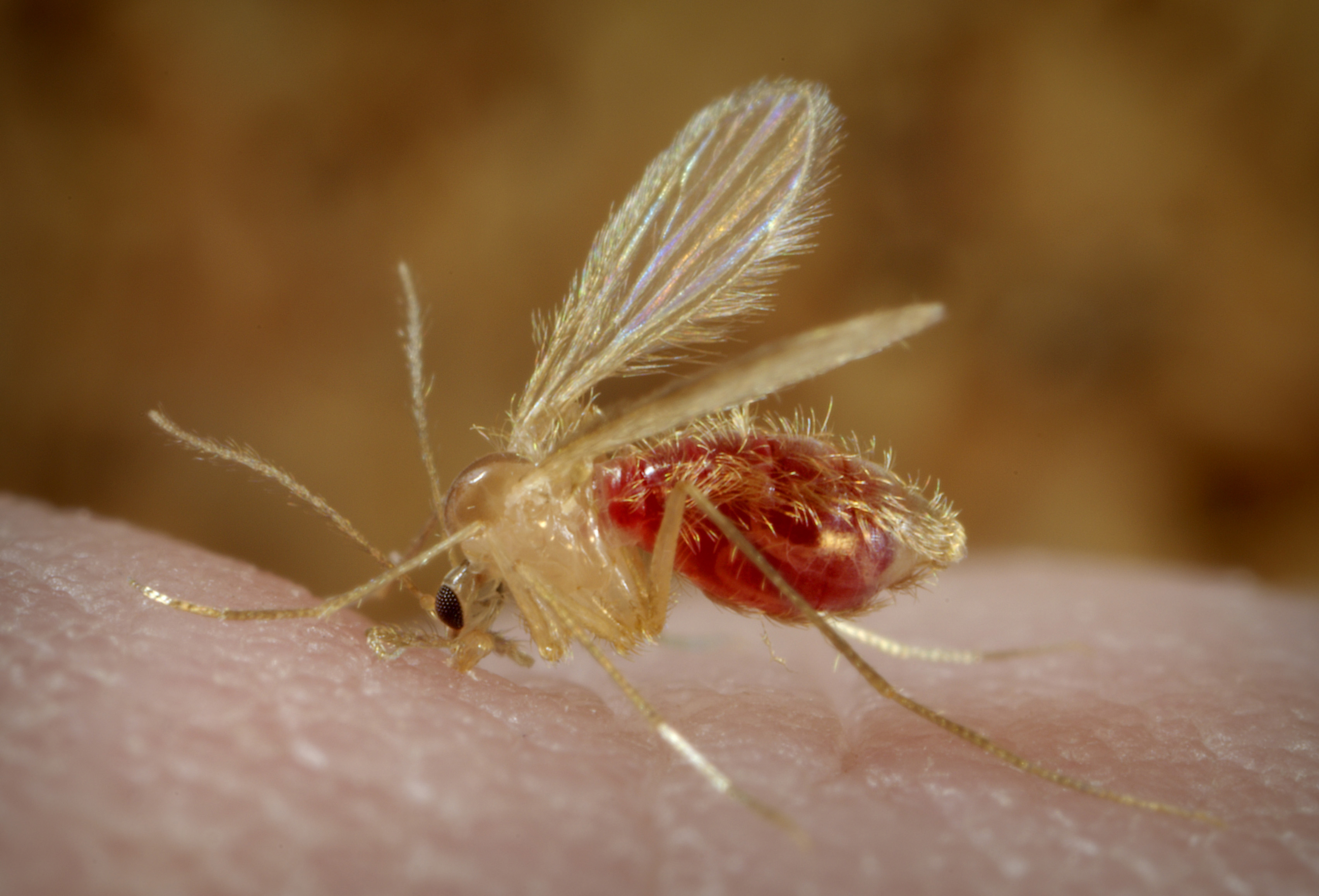- Phlebotominae
image_caption = "Phlebotomus pappatasi "
regnum =Animal ia
phylum =Arthropod a
subphylum =Hexapoda
classis =Insect a
subclassis =Pterygota
infraclassis =Neoptera
superordo =Endopterygota |
ordo = Diptera
subordo =Nematocera
infraordo =Psychodomorpha
familia =Psychodidae
subfamilia = Phlebotominae
subdivision_ranks = Genera
subdivision = manyMembers of the subfamily Phlebotominae are known outside of the
United States by the name sand fly. This subfamily includes numerous genera of blood-feeding (hematophagous ) flies, including the primary vectors ofleishmaniasis , sandfly fever. In theNew World , leishmaniasis is spread by sand flies of the genus "Lutzomyia ", which are common inhabitants ofcave s, where they feed onbat s. In theOld World , the disease is spread by sand flies of the genus "Phlebotomus ".Female sand flies suck blood from many
warm-blooded animal s because the blood helps to create eggs. Only female sand flies bite, and use their mouthparts to create a pool of blood, which is then sucked up. They inject histamine to prevent blood clotting, similar to the feeding habits of a femalemosquito .Females lay their eggs in humid soil rich in organic matter. One blood meal can result in the creation of up to 100 eggs.
Sand flies are small (with a body size of about 3mm in length), making them hard to detect. Their bite is sometimes not felt and leaves a small round, reddish bump that starts itching hours or days later. Use of insect repellent is recommended in areas where sand flies are present.
*See alsoUse of DNA in forensic entomology External links
* [http://www.ncbi.nlm.nih.gov/entrez/query.fcgi?cmd=Retrieve&db=PubMed&list_uids=1841259&dopt=Abstract A classification of the subfamily Phlebotominae.] Pubmed 1991
* [http://cipa.snv.jussieu.fr/index.html? CIPA Computer-aided Identification of Phlebotomine sand flies of America]
* [http://creatures.ifas.ufl.edu/misc/flies/Lutzomyia_shannoni.htm "Lutzomyia shannoni", a sand fly] on theUF / IFAS Featured Creatures Web site
Wikimedia Foundation. 2010.

